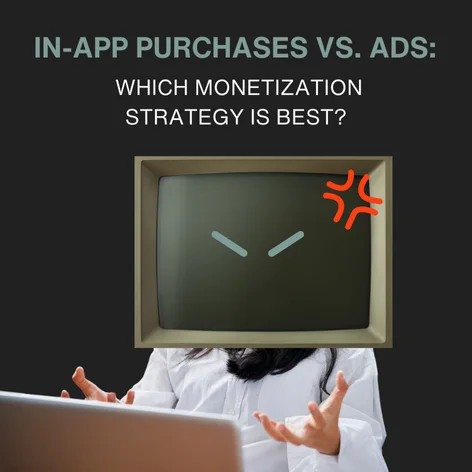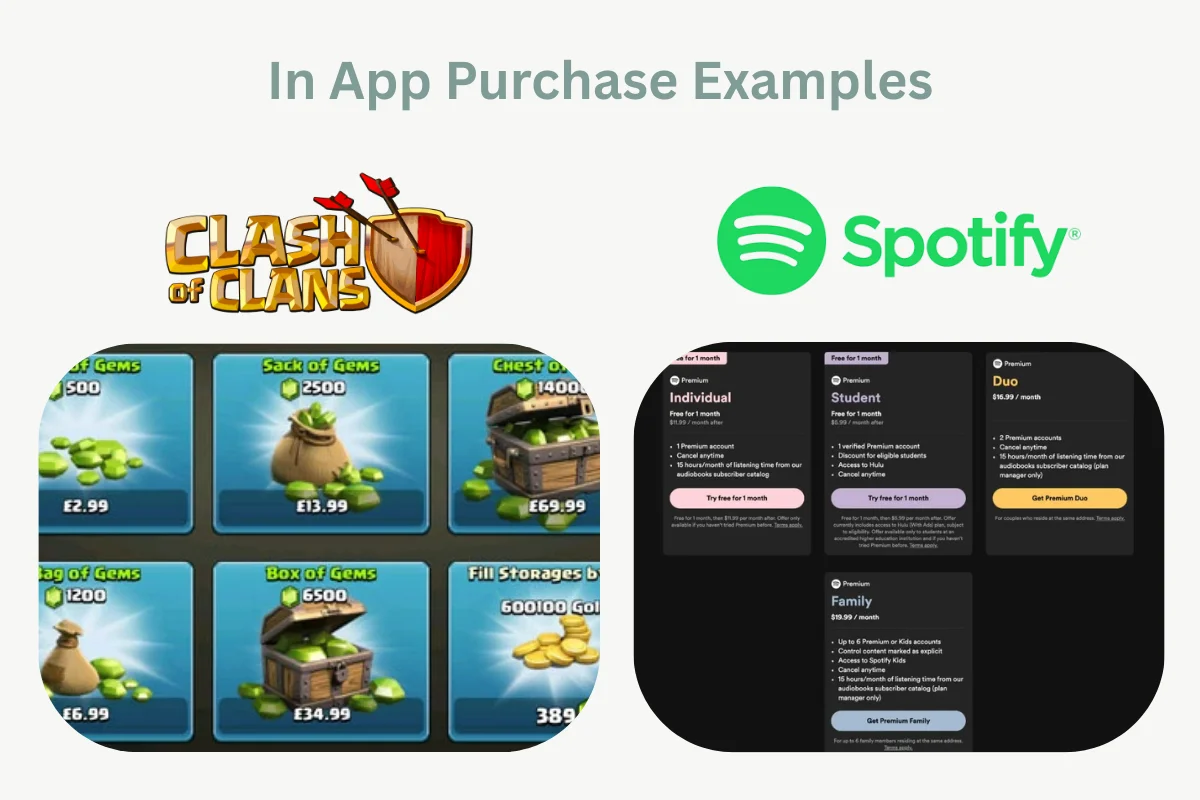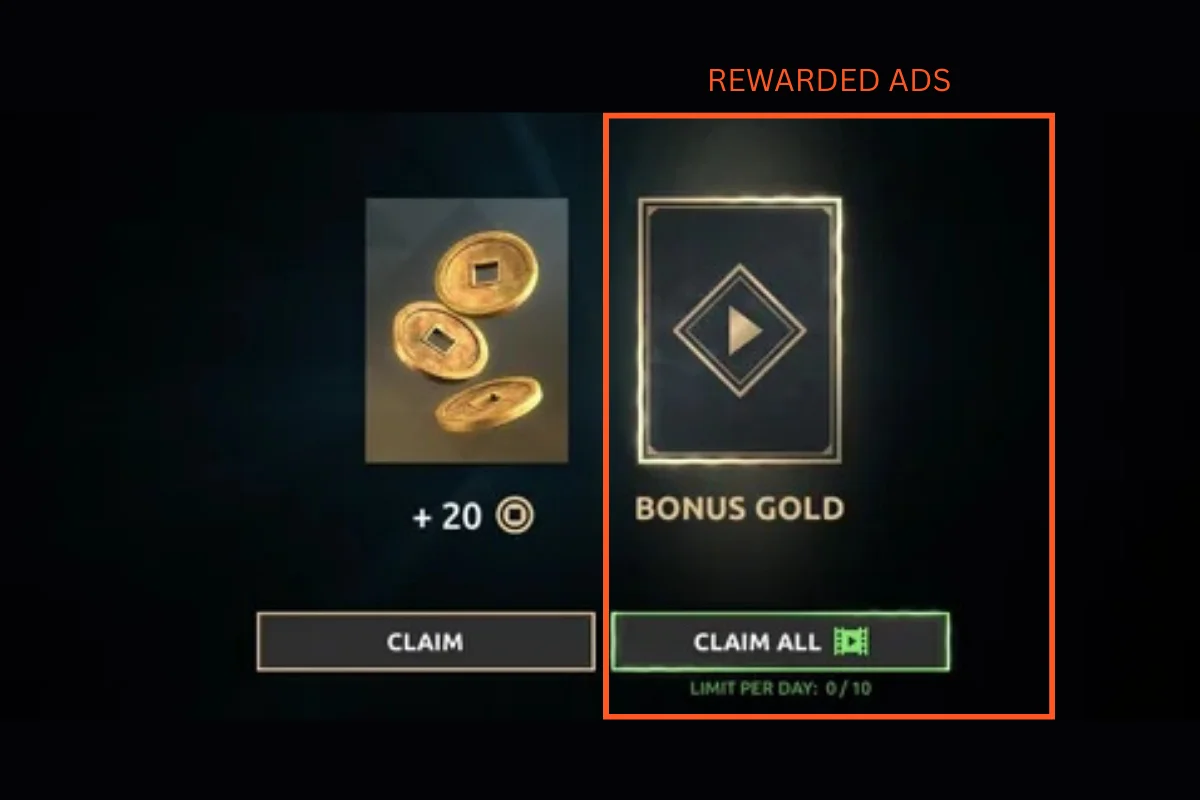In-App Purchases vs Ads: Which Strategy is Best?
You’ve created your app, and people are starting to download,...
We use cookies for our website to give you the most relevant experience by remembering your preferences. By clicking “accept”, you consent to use of ALL the cookies
This website uses cookies to improve your experience while you navigate through the website. Out of these, the cookies that are categorized as necessary are stored on your browser as they are essential for the working of basic functionalities of the website. We also use third-party cookies that help us analyze and understand how you use this website. These cookies will be stored in your browser only with your consent. You also have the option to opt-out of these cookies. But opting out of some of these cookies may affect your browsing experience.
Necessary cookies are absolutely essential for the website to function properly. These cookies ensure basic functionalities and security features of the website, anonymously.
| Cookie | Duration | Description |
|---|---|---|
| cookielawinfo-checkbox-functional | 11 months | This cookie is set by GDPR Cookie Consent plugin. The cookie is used to store the user consent for the cookies in the category “Analytics”. |
| cookielawinfo-checkbox-functional | 11 months | The cookie is set by GDPR cookie consent to record the user consent for the cookies in the category “Functional”. |
| cookielawinfo-checkbox-necessary | 11 months | This cookie is set by GDPR Cookie Consent plugin. The cookies is used to store the user consent for the cookies in the category “Necessary”. |
| cookielawinfo-checkbox-others | 11 months | This cookie is set by GDPR Cookie Consent plugin. The cookie is used to store the user consent for the cookies in the category “Other. |
| cookielawinfo-checkbox-performance | 11 months | This cookie is set by GDPR Cookie Consent plugin. The cookie is used to store the user consent for the cookies in the category “Performance”. |
| viewed_cookie_policy | 11 months | The cookie is set by the GDPR Cookie Consent plugin and is used to store whether or not user has consented to the use of cookies. It does not store any personal data. |
Functional cookies help to perform certain functionalities like sharing the content of the website on social media platforms, collect feedbacks, and other third-party features.
Performance cookies are used to understand and analyze the key performance indexes of the website which helps in delivering a better user experience for the visitors.
Analytical cookies are used to understand how visitors interact with the website. These cookies help provide information on metrics the number of visitors, bounce rate, traffic source, etc.
Advertisement cookies are used to provide visitors with relevant ads and marketing campaigns. These cookies track visitors across websites and collect information to provide customized ads.
Other uncategorized cookies are those that are being analyzed and have not been classified into a category as yet.
Cyberia Tech, Inc. respects your privacy. This Privacy Policy explains how we collect, use, and share your information. By using our services, you agree to this policy. If any other agreements conflict with this Privacy Policy, the terms of those agreements prevail.
Cyberia Tech complies with the EU-US and Swiss-US Privacy Shield Frameworks for handling personal data from the EEA, UK, and Switzerland. In case of any conflict, the Privacy Shield Principles prevail. Learn more at Privacy Shield. Key Definitions
Information linked to an individual, transferred from the EEA, UK, or Switzerland to the U.S.
Data revealing race, religion, health, sexual orientation, and similar categories.
Effective Date: [ 2025 / 08 / 30 ]
Welcome to The Cyberia Tech ! By accessing or using our website or services, you agree to
comply with and be bound by these Terms of Use and our Privacy Policy. If you do not agree with
these terms, please do not use our Services.
Loading
0 %

You’ve created your app, and people are starting to download, but now you have a new challenge:
How, then, do you convert that growth into revenue? When it comes to app monetization strategies, there are many, from paid apps to subscriptions, freemium models, sponsorships and more. But there are two dominant approaches that are usually the most popular, and still the most controversial: in-app purchases vs ads.
In this article, we’ll walk through how both models work, their pros and cons, examples of successful apps that are using the two approaches, and practical guidance to help you decide which one is the right fit for your business and product.

In-app purchases (IAPs) are probably the most well known app monetization methods. They allow users to unlock additional features, purchase consumables, cold-pack cosmetic upgrades or subscribe to premium services.
In-app purchases (IAPs) are one of the most familiar app monetization strategies. They let users unlock extra features, buy consumables, pay for cosmetic upgrades, or subscribe to premium services. For many app owners, IAPs can be highly rewarding because they allow for predictable, recurring revenue and create a clean, ad-free experience for users.
But they come with challenges too. In app purchases typically have very low conversion rates, only around one to two percent of users actually pay. On top of that, app stores take a 15–30% commission on each purchase of your app. This means you need to clearly communicate the value of your premium features, or risk losing users because If they don’t see the value, they might stop using your app or cancel subscriptions. Popular examples of successful IAP-driven apps include Candy Crush, Duolingo,Clash of Clans and Spotify.
Advertising plays a big role when it comes to the whole in-app purchases vs ads discussion. The main advantage of using In-App ads is that it lets you monetize every single user, not just the ones who pay. That’s why they work well for apps that have big user bases like YouTube. Ads can show up in different formats such as banners, interstitials, native placements, or rewarded ads where users choose to watch in exchange for a perk.
The good part is you start earning right away, and from 100% of your audience. The downside? If a user sees too many ads that they have no control over they might get impatient and irritated making them uninstall. On top of that, CPM rates (It’s basically how much advertisers pay for 1,000 ad impressions) keep changing with the ad market, so revenue isn’t always predictable. The exception is rewarded ads, which are usually received more positively since they feel like an option. That’s why platforms like YouTube, TikTok, and many free-to-play games rely heavily on ad models.

When it comes to in-app purchases vs ads, it’s all about balancing what you gain and what you give up. Purchases generate higher revenue per user but only capture a small slice of your audience. Ads reach everyone, but often bring in less money per user and can hurt the user experience if not implemented carefully.
The best option often depends on your app’s category. Games and productivity tools frequently succeed with in-app purchases, while content-driven platforms like social media apps or streaming services tend to monetize better with ads. Many developers now combine both, offering rewarded ads alongside optional premium purchases or ad-removal subscriptions.
Of course, in-app purchases vs ads aren’t the only paths to revenue. Other app monetization strategies include
Still, ads and IAPs remain the backbone for most successful apps today.
There are plenty of examples out there as we showcase some before. Candy Crush Saga is probably the most famous when it comes to in-app purchases. The game is free to play, but if you want extra lives, boosters, or to move ahead faster, you pay. It’s built around little moments where spending a bit feels worth it. That’s the whole strength of in-app purchases, when the app makes progress or convenience valuable enough that people don’t mind paying.
On the ad side, we have giants like YouTube and TikTok. These apps have huge audiences, so ads are the easiest way to turn all that attention into revenue. Instead of charging users directly, they keep people watching for as long as possible and fit ads into the experience. Formats vary, from pre-rolls and mid-rolls on YouTube to TikTok’s scroll-stopping ads that feel like part of the feed.
Oh and it doesn’t have to be a case of in-app purchases vs ads, when you can have both! Duolingo is a great example of a hybrid model approach. The free version shows ads between lessons, but you can pay for premium to remove them and get extra perks. A lot of mobile games do the same, mixing rewarded ads (watch a short video, get coins or a retry) with regular in-app purchases. This way, developers earn from both free and paying users, and players get options: spend money, or spend time.
So, which is better, in-app purchases vs ads? The truth is, there’s no universal winner. The right decision here depends on your app type, audience, and market. Games may benefit from a hybrid approach, productivity apps often lean on subscriptions, and social platforms succeed with ad-driven models.
From my perspective as a user, Intrusive ads can make me uninstall an app almost instantly, they interrupt the flow and remind me that I’m not really in control of the experience. But on the flip side, apps that lock too much behind strict paywalls feel just as unwelcoming.
The apps that actually keep me around are the ones that find a middle ground. If they use ads, they do it in a way that doesn’t constantly disrupt me and they are actually providing a service that is worth waiting for. And if they use in-app purchases, they make those purchases feel like upgrades or shortcuts, not necessities.
In the end, the best app monetization strategy isn’t just about revenue, it’s about building an app people actually want to keep using. So your best move is to start with one model, experiment, and adapt. Many of today’s most successful apps succeed not by choosing between in-app purchases vs ads, but by combining them into a user-friendly system. Whatever path you choose, keep testing, listen to your audience, and refine your app monetization strategy until it fits your product perfectly.
For more business tips and growth insights, you can explore our business tips articles at The Cyberia Tech.
You Can Get More Information!

Honestly, this is a great way of summarising everything! The freemium model doesn’t always work and paid apps do not always deliver what the user expects
Exactly!